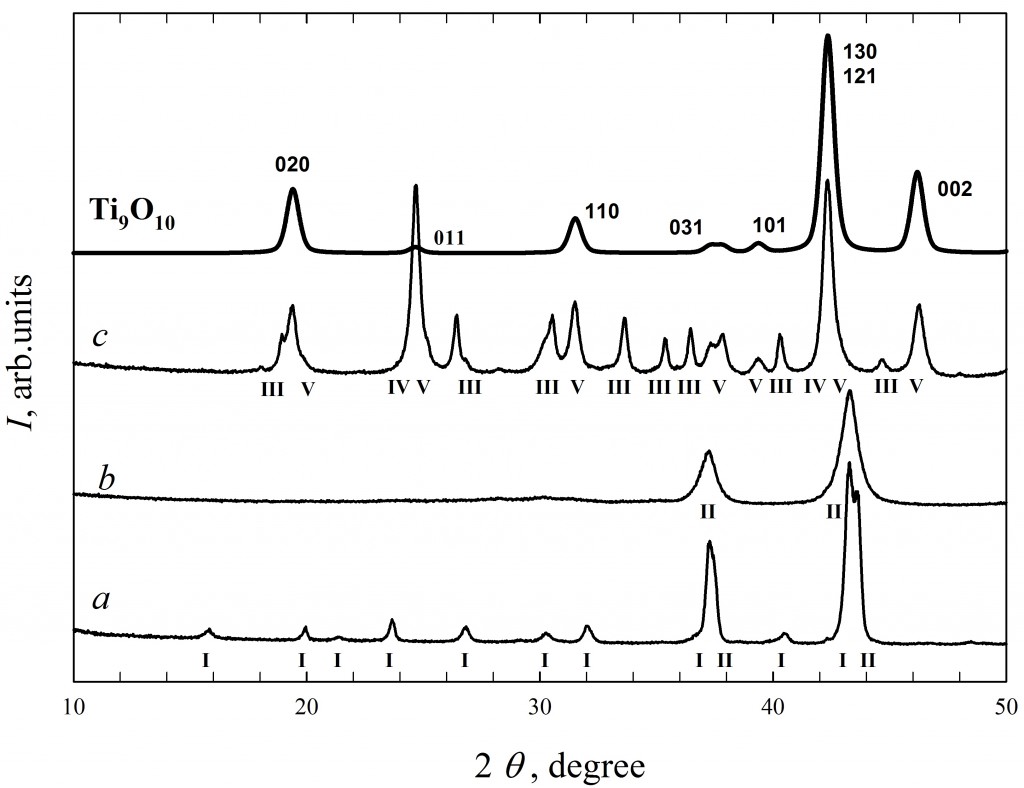NANOSYSTEMS: PHYSICS, CHEMISTRY, MATHEMATICS, 2017, 8 (6), P. 816–822
Stable Ti9O10 nanophase grown from nonstoichiometric titanium monoxide TiOy nanopowder
A. A. Valeeva – Institute of Solid State Chemistry, Ural Branch of the Russian Academy of Sciences, 620990 Pervomayskaya 91, Ekaterinburg; Ural Federal University named after the first President of Russia B. N. Yeltsin, 620002 Mira 19, Ekaterinburg, Russia; anibla_v@mail.ru
M. G. Kostenko – Institute of Solid State Chemistry, Ural Branch of the Russian Academy of Sciences, 620990 Pervomayskaya 91, Ekaterinburg, Russia; makskostenko@yandex.ru
A new stable Ti9O10 nanophase (sp. gr. Immm) has been detected by X-ray diffraction (XRD) after high energy ball milling and long-term vacuum annealing of nanocrystalline powder of nonstoichiometric disordered and ordered titanium monoxide TiOy with B1 structure (sp. gr. Fm3m). With the help of XRD data, the unit cell of the Ti9O10 nanophase as well as the distribution of atoms and structural vacancies in the titanium and oxygen sublattices of this phase have been established. The crystal structure of Ti9O10 is derived from that of TiOy by (a) a migration of the vacancies to the specific crystallographic planes of B1 structure and (b) by orthorhombic distortions. The DFT calculations of the full energy of the coarsecrystalline phases TiOy and Ti9O10 revealed that the bulk ordered phase Ti9O10 is not preferable in comparison with the bulk disordered cubic phase TiOy with the same content of vacancies in the sublattices, so, it is the nanostate that causes the formation of Ti9O10.
Keywords: Titanium monoxide, ball milling, nanophase Ti9O10, phase transition, electronic structure.
PACS 61.72.Dd, 61.72.Bb, 64.70.Nd, 71.20.Ps
DOI 10.17586/2220-8054-2017-8-6-816-822
